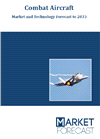Rheinmetall and Anduril Industries announced a strategic partnership to co-develop and deliver a suite of software-defined autonomous systems to extend the availability of autonomous mission systems.
The partnership is starting with the development of three proven capabilities – but is about to be extended with more next generation technologies over time:
These systems will be jointly developed and produced by the two companies, incorporating sovereign suppliers and industrial partners throughout Europe.

Market forecast by Region, Type, and Fitment. Technologies and Market Overview, Critical Raw Materials, Country Analysis, Opportunity Analysis, and Leading Companies
Download free sample pages More information“This is a different model of defence collaboration, one built on shared production, operational relevance, and mutual respect for sovereignty,” said Brian Schimpf, CEO of Anduril Industries. “Together with Rheinmetall, we’re building systems that can be produced quickly, deployed widely, and adapted as NATO missions evolve.”
“Rheinmetall has always stood for reliability, scale, and strategic depth in defence manufacturing,” said Armin Papperger, CEO of Rheinmetall. “By integrating Anduril`s solutions into Rheinmetall´s European production set up and digital sovereignty framework, we’re building on that foundation to bring new kinds of autonomous capabilities into service, ones that are quick to produce, modular, and aligned with NATO’s evolving requirements.”
Built in Europe, for Europe
This partnership is a long-term shared investment in co-developing easily fielded systems tailored to the specific needs of each European regional market. It reflects a “built with, not for” philosophy—one that prioritizes European sovereignty, local control, transparency, and adaptability over dependency or lock-in.
A Shared Approach to Industrial Defence
The partnership builds on earlier collaboration between the two companies, including the development of a layer countered UAS solution and a joint pursuit of the U.S. Army’s Optionally Manned Fighting Vehicle (OMFV) program. Rather than slow, proprietary development pipelines that tie customers to a single vendor, this partnership embraces speed, modularity, and co-development. It’s a model that empowers allies to shape and evolve their own capabilities, while working within a shared NATO-aligned framework.
The partnership builds on earlier collaboration between the two companies, including the development of a layer countered UAS solution and a joint pursuit of the U.S. Army’s Optionally Manned Fighting Vehicle (OMFV) program. Rather than slow, proprietary development pipelines that tie customers to a single vendor, this partnership embraces speed, modularity, and co-development. It’s a model that empowers allies to shape and evolve their own capabilities, while working within a shared NATO-aligned framework.